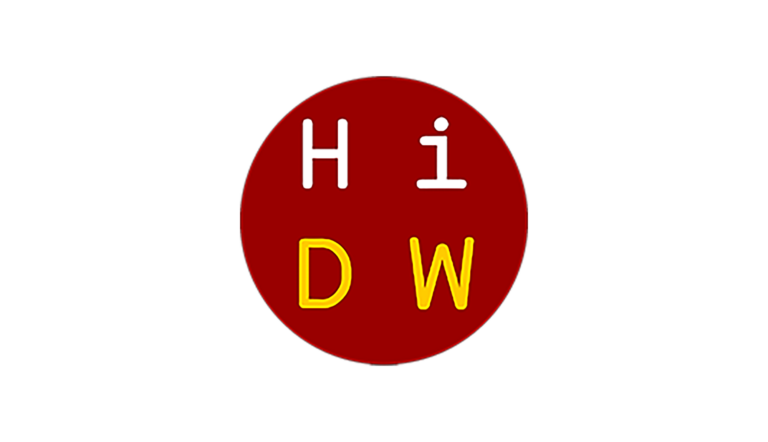Hosted by the USC Mellon Humanities in a Digital World Program and the Ahmanson Lab, the Immersive Technologies and Cultural Heritage (ITCH) Symposium will take place on Friday, September 20, and Saturday, September 21, 2024.
It will bring together humanities researchers working with immersive technologies to showcase innovative projects, engage in feedback, and build community. The sessions will elucidate benefits of working at the intersection of digital technologies and the liberal arts.
During the symposium, each participant will lead a hands-on demonstration of their project; give a 10-15-minute presentation summarizing the project’s context, goals, and implications for humanities scholarship; and offer a prepared comment regarding a project shared by a fellow participant. The symposium will conclude with a roundtable discussion considering the promise and perils of immersive technologies for humanities research, teaching, and learning.
Friday & Saturday, September 20 & 21, 2024
Organizers:
Mats Borges, Ahmanson Lab
Amy Braden, USC Mellon Humanities in a Digital World
Lauren Dodds, USC Mellon Humanities in a Digital World
Curtis Fletcher, Ahmanson Lab
Sean Fraga, USC
The USC Mellon Humanities in a Digital World Program and the Ahmanson Lab invite you to join the Immersive Technologies and Cultural Heritage (ITCH) Symposium. This two-day event will bring together humanities researchers working with immersive technologies to showcase innovative projects, engage in feedback, and build community. The sessions will elucidate benefits of working at the intersection of digital technologies and the liberal arts.
See the Symposium program for the full schedule.
Presentations:
“Exploring Volumetric Video Capture for Humanities Scholarship and Pedagogy”
Zack Lischer-Katz, University of Arizona
Rashida Braggs, Williams College
Bryan Carter, University of Arizona
The Center for Digital Humanities (CDH) at the University of Arizona uses volumetric video as an immersive humanistic technology for increasing the awareness of Black, Indigenous, People of Color’s (BIPOC) cultural histories in pedagogy and scholarship.With an NEH Digital Humanities Advancement Grant, the team explored the challenges and benefits of volumetric video in their project, Preserving BIPOC Expatriates’ Memories During Wartime and Beyond.
“Recontextualizing Egypt’s Ancient Material Heritage: The ‘Return to the Tomb’ Project”
Rita Lucarelli, University of California, Berkeley
Elaine Sullivan, University of California, Santa Cruz
The Return to the Tomb project deploys VR headset technologies to virtually reimagine the monumental stone sarcophagus of an ancient elite Egyptian military officer named Psamtek back in its original historic context in a rock-cut tomb at the ancient cemetery of Saqqara near Cairo, Egypt.
“Playing with Time: Great Perfection History in Virtual Reality”
Elaine Lai, Stanford University
Aftab Hafeez, Google
This virtual reality project traces the teacher-student relationships within the three major transmission streams of the The Great Perfection (Tibetan: རྫོགས་ཆེན་ Dzogchen), a Buddhist tradition that gained popularity in Tibet from the 11th-14th centuries and remains a significant branch of Tibetan Buddhism today.
“Tapestry: Enhancing Engagement with Cultural Heritage through Multivocal Spatial Storytelling”
Elizabeth Lee, CyArk
John Ristevski, CyArk
Tapestry is an immersive web and mobile storytelling platform designed to deepen engagement with cultural heritage through rich, layered storytelling, allowing users to explore cultural sites in a highly engaging, spatially aware manner.
“Facilitating Access to Hidden Collections with 3D Models”
Harper Tooch, Washington University, St. Louis
Sarah Swanz, Washington University, St. Louis
This project focuses on creating high-quality 3D models of maquettes—scale models of theatre designs—created by award-winning American set designer John Ezell. The VR experience allows users to explore Ezell’s maquettes as full-scale sets within the virtual environment of WashU’s Edison Theatre.
“Using 3D Data to Document and Exhibit Cultural Heritage”
Doug Daniels, University of California, Los Angeles Data Science Center
Bianca Badajos, University of California, Los Angeles Data Science Center
Kelly Nguyen, University of California, Los Angeles Data Science Center
The Refugee Material Culture Initiative (RCMI) is a community-engaged, digital humanities project with the aims of 1) digitally preserving art and artifacts made/used by refugees, 2) creating a free and accessible database of the digital projects, and 3) generating educational resources on refugee histories. RMCI is working closely with the Vietnamese Heritage Museum, located in Westminster, California, to digitize their refugee artifact collection.
“‘Slow Viewing’ and Collective Meaning Making in Virtual Angkor: A Workshop and Discussion on Virtual Reality Design and Teaching”
Cindy Nguyen, University of California, Los Angeles
Tom Chandler, Monash University
Virtual Angkor is a virtual reconstruction of the medieval Cambodian capital of Angkor that seeks to explore the diversity and complexity of Southeast Asia in digital heritage studies.
“Digital Innovation for the Historical Reconstruction of the Basin of Mexico”
Edgar Allan Lara Paredes, Museo Virtual Anáhuac
Carlos Francisco López Ramírez, Museo Virtual Anáhuac
Jesús Gerardo Sánchez Medina, Museo Virtual Anáhuac
MUVIAN is an interdisciplinary project that brings together historians, archaeologists, and programmers with the purpose of studying, reconstructing, and disseminating the historical past of the Basin of Mexico.
2024 ITCH Panel Videos
Rita Lucarelli (UC Berkeley) & Elaine Sullivan (UC Santa Cruz)
Elaine Lai (Stanford University) & Aftab Hafeez (Google)
Zack Lischer-Katz (University of Arizona), Rashida Braggs (Williams College), & Bryan Carter (University of Arizona)
Elizabeth Lee (CyArk) & John Ristevski (CyArk)
Harper Tooch (Washington University, St. Louis) & Sarah Swanz (Washington University, St. Louis)
Doug Daniels (UCLA), Bianca Badajos (UCLA), & Kelly Nguyen (UCLA)
Carlos Francisco López Ramírez (Museo Virtual Anáhuac) & Jesús Gerardo Medina Sánchez (Museo Virtual Anáhuac)
Cindy Nguyen (UCLA) & Tom Chandler (Monash University)
Banner image: Will Young

